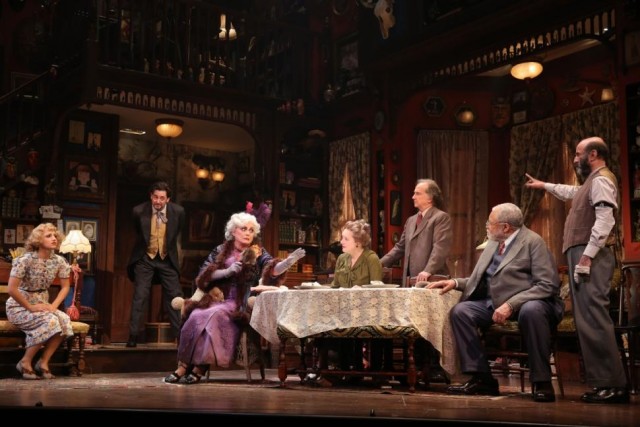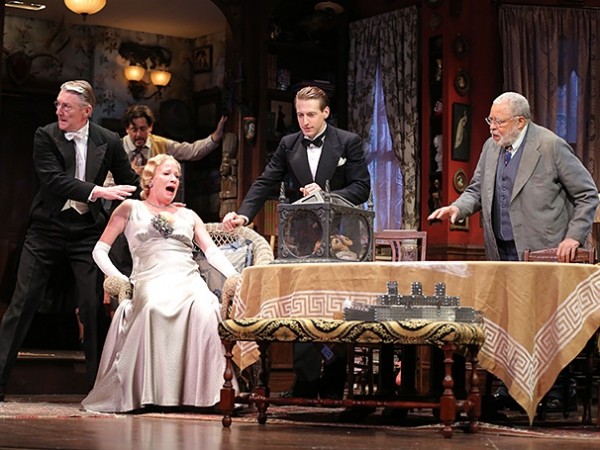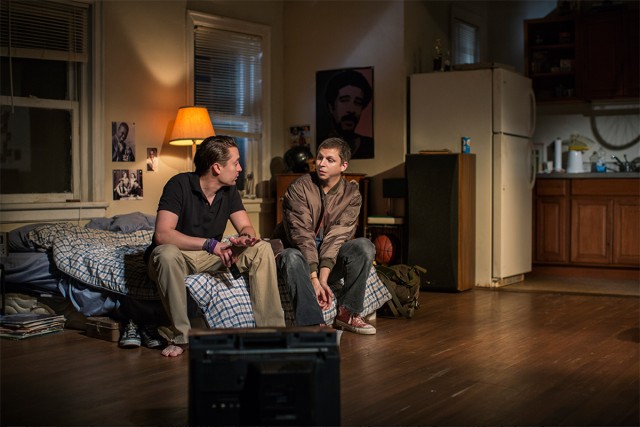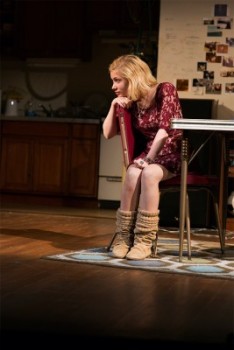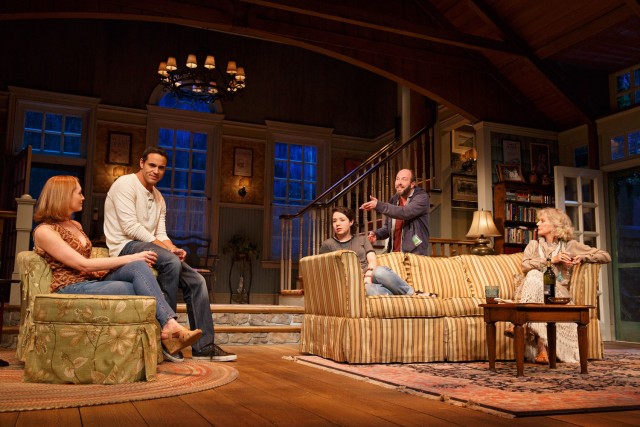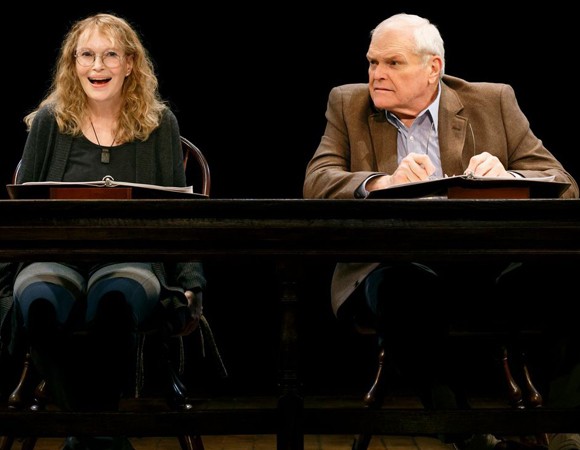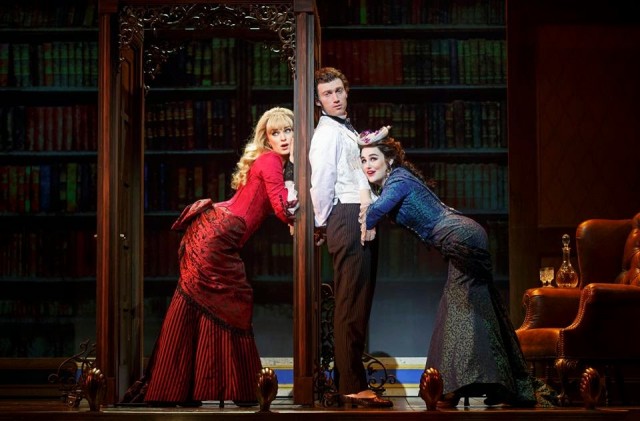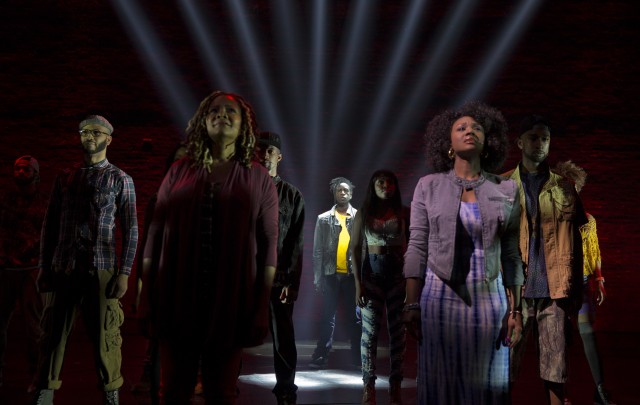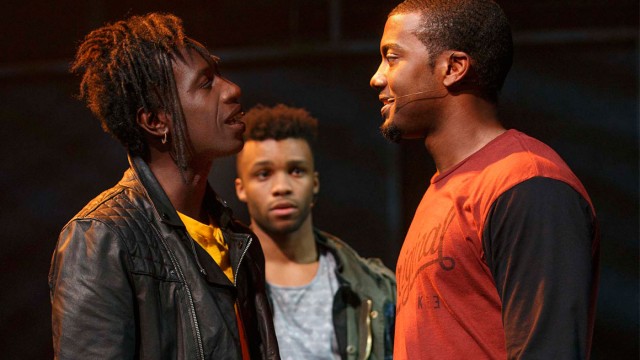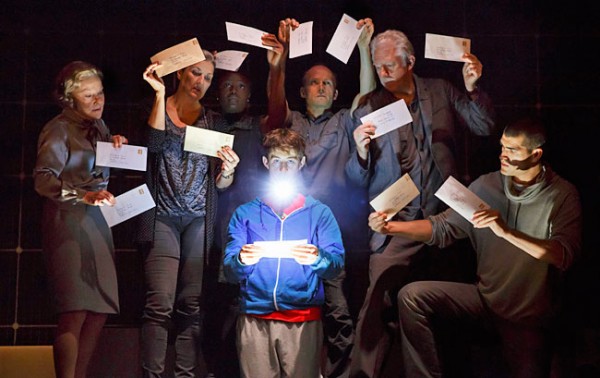
THE CURIOUS INCIDENT OF THE DOG IN THE NIGHT-TIME is lighting up the Ethel Barrymore Theatre (photo by Joan Marcus)
Ethel Barrymore Theatre
243 West 47th St. between Broadway & Eighth Ave.
Tuesday – Sunday (and some Mondays) through December 30, $27 – $225
www.curiousonbroadway.com
www.shubert.nyc
The National Theatre production of The Curious Incident of the Dog in the Night-time is an extraordinary multimedia journey through the mind of a fifteen-year-old boy with a kind of Asperger’s syndrome. Adapted with extraordinary care and insight by Simon Stephens (On the Shore of the Wide World, Punk Rock) from Mark Haddon’s award-winning novel and directed with flair by Marianne Elliott, the show takes place inside the created universe of truth-telling Christopher John Francis Boone (Alexander Sharp), an odd teen who is obsessed with prime numbers and mathematics, has a beloved pet rat named Toby, and does not like being touched. Upon discovering that the neighbor’s dog has been murdered, Christopher decides to play detective, interviewing people in the community to find the culprit. His father, Ed (Ian Barford), insists he stop sleuthing, as it will only lead to more trouble — Christopher has already been brought in by the cops, who considered him the chief suspect — but Christopher is determined to solve this mystery, as though it were a difficult but not impossible math equation. And when Christopher uncovers a shocking secret about his mother, Judy (Enid Graham), he sets out on another adventure, filled with dangers all its own.
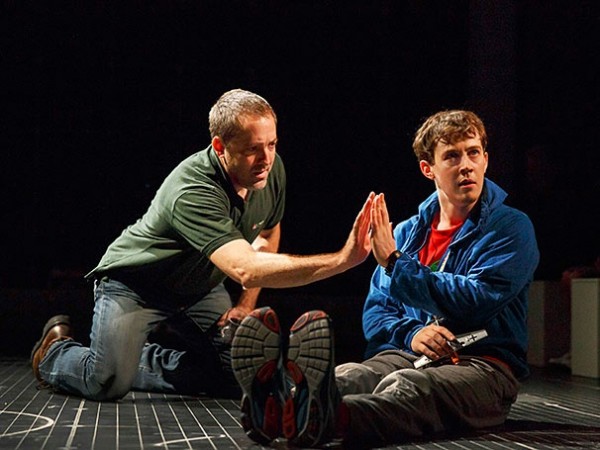
Christopher (Alexander Sharp) and his father (Ian Barford) bond in imaginative stage adaptation of Mark Haddon’s award-winning book (photo by Joan Marcus)
The Curious Incident of the Dog in the Night-time won seven Olivier Awards, including Best New Play, Best Director (Elliott), Best Actor (Luke Treadaway), and Best Supporting Actress (Nicola Walker), and it’s likely to win a bunch of prizes at next year’s Tonys as well. Elliott’s staging is captivating, the floor and three walls a grid on which Christopher draws emoticons, maps depict his travels, constellations appear, and video projections create a stunning escalator. Every technical element is worth praising: The sets and costumes are by Bunny Christie, lighting by Paule Constable, video by Finn Ross, choreography by Scott Graham and Steven Hoggett, music by Adrian Sutton, and sound by Ian Dickinson, combining to turn Haddon’s book into a treat for the senses. Twenty-five-year-old Sharp, a recent Juilliard graduate from London, is so immersed in his role that it is hard to believe he is acting, or that anyone else can play the part, but indeed, Luke Treadaway originated Christopher at the National Theatre, and Taylor Trensch gives Sharp a rest during matinees at the Ethel Barrymore Theatre. The cast members, several of whom play multiple roles, also includes Francesca Faridany as Siobhan, Christopher’s teacher and mentor who narrates brief passages from the book; Helen Carey as Mrs. Alexander, a gossipy neighbor who invites Alexander in for cookies; David Manis as Rev. Peters, who discusses God and heaven with the boy; and Mercedes Herrero and Richard Hollis as Mr. and Mrs. Shears, the owners of the dead dog. The repetitive, self-referential nods to the book as book are unnecessary, pulling the audience out of the immersive fantasy for a moment, and the postcurtain coda also takes the crowd out of the world of the play to allow the production to show off one more time, but otherwise The Curious Incident of the Dog in the Night-time is an absolute delight, a breathtaking, endlessly imaginative theatrical experience that is not to be missed. (As a bonus, some lucky ticketholders will find themselves in a Prime Number Seat, specially chosen by Christopher, which will win them a Curious button if the letters in their name add up to a prime number.)
